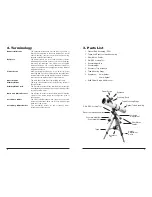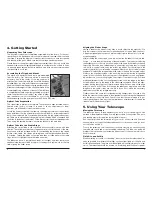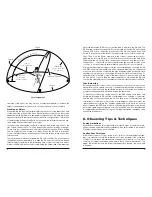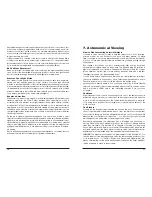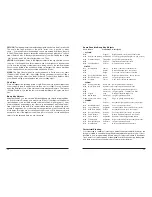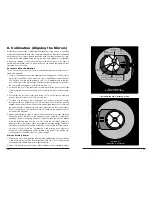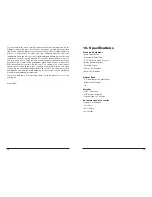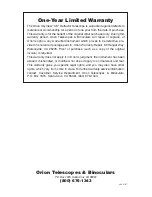
13
some Favorite Deep sky objects
Cat# Name
Constellation Description
• AUTUMN
M15
Pegasus
Bright globular cluster with variable stars
M31 Andromeda Galaxy Andromeda Very large galaxy with bright core (low power!)
M33 Pinwheel Galaxy
Triangulum Large spiral galaxy (difficult)
M34
Perseus
Impressive double star cluster
M76 Little Dumbbell
Perseus
Planetary nebula irregular
• WINTER
M1
Crab Nebula
Taurus
Nebula – remains of exploded star
M35
Gemini
Diamond-shaped open star cluster
M37
Auriga
Fine open cluster of about 150 stars
M42 Great Orion Nebula Orion
Bright, detailed nebula – best in the sky
M44 Beehive Cluster
Cancer
Large, bright open cluster
M45 Pleiades
Taurus
Huge open cluster with nebulosity
• SPRING
M51 Whirlpool Galaxy
Canes Ven. Spiral galaxy with companion
M64 Black-eye Galaxy
Coma Beren. Elongated galaxy with dust lanes
M81
Ursa Major Bright spiral galaxy with bright core
M82
Ursa Major Irregular galaxy – companion to M81
M87 Virgo A
Virgo
Round galaxy with bright core
M97 Owl Nebula
Ursa Major Irregular planetary nebula
M104 Sombrero Galaxy
Virgo
Edge-on galaxy with dust lanes
• SUMMER
M5
Serpens
Splendid, bright globular cluster, very bright
M6
Butterfly Cluster
Scorpius
Fine, rich open star cluster
M8
Lagoon Nebula
Sagittarius
Irregular nebula with companion star cluster
M11 Wild Duck Cluster Scutum
Wonderfully dense open star cluster
M13 Hercules Cluster
Hercules
Favorite globular star cluster, very bright
M16 Eagle Nebula
Serpen
Nebula with dust lanes and star cluster
M17 Swan Nebula
Sagittarius
Beautiful, interestingly-shaped nebula
M20 Trifid Nebula
Sagittarius
Bright nebula with prominent dark dust lanes
M27 Dumbbell Nebula
Vulpecula
Irregular planetary nebula
M57 Ring Nebula
Lyra
Dim, beautiful ring-shaped nebula
terrestrial Viewing
Your telescope is capable of focusing on distant terrestrial subjects; however, the
image is rotated to an awkward angle and the eyepiece height is very low. It is not
possible to use “image erecting prisms” with your telescope—there is insufficient
focus travel. Your telescope was not designed for effective use during the daytime,
and there are no accessories which will overcome this limitation.
SATURN The ringed planet is a breathtaking sight when Saturn is well positioned.
The angle the rings present to the earth varies over a period of many
years . . . sometimes they are seen edge-on and are entirely invisible as they are
in 1995! Other times, they are broadside and easily seen as giant “ears” on each
side of Saturn’s disc. A steady night is necessary. You will probably see a bright
“star” close by, which is Saturn’s brightest moon, Titan.
VENUS At its brightest, Venus is the brightest object in the sky after the sun and
the moon. It will appear as a thin crescent when at its brightest. It is never seen
too far from the morning or evening horizon, being close to the sun. Sometimes
Venus is even visible to the naked eye during full daylight! No surface markings
can be seen as Venus is always covered with dense clouds.
MARS The Red Planet makes its closest approach to Earth every two years
(February 1995, March 1997, April 1999). During close approaches you’ll see a
red disc, and may be able to see the polar ice cap. To see surface detail on Mars,
you will need a high power eyepiece and a very steady night!
the stars
Stars will appear like twinkling points of light. Even the more powerful telescopes
cannot magnify stars to appear as more than a point of light! You can, however,
enjoy the different colors of the stars and locate many double stars. The famous
“Double-Double” in Lyra and the two-color double star Alberio in Cygnus are favor-
ites.
Deep sky objects
Under dark skies, you can observe fascinating deep sky objects including Nebu-
las, Star Clusters, Galaxies, and many more. Many of the objects will appear as
faint smudges or be invisible except under dark skies; higher power or lower
power eyepieces, depending on the object, may be needed as well. Take plenty of
time to get used to the dark. Don’t expect these subjects to appear like photo-
graphs in magazines. As you become more experienced, you will see more and
more detail. (Our eyes are not sensitive enough to see color in deep sky objects
except for a few of the brightest ones.) Use your star atlas to choose deep space
objects for the date and time you are observing.
12



